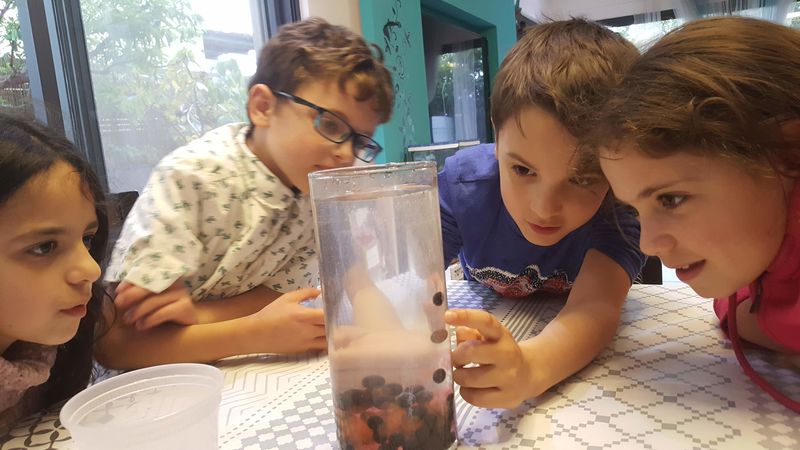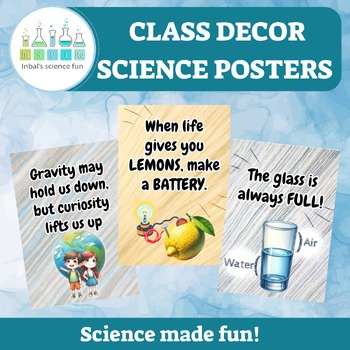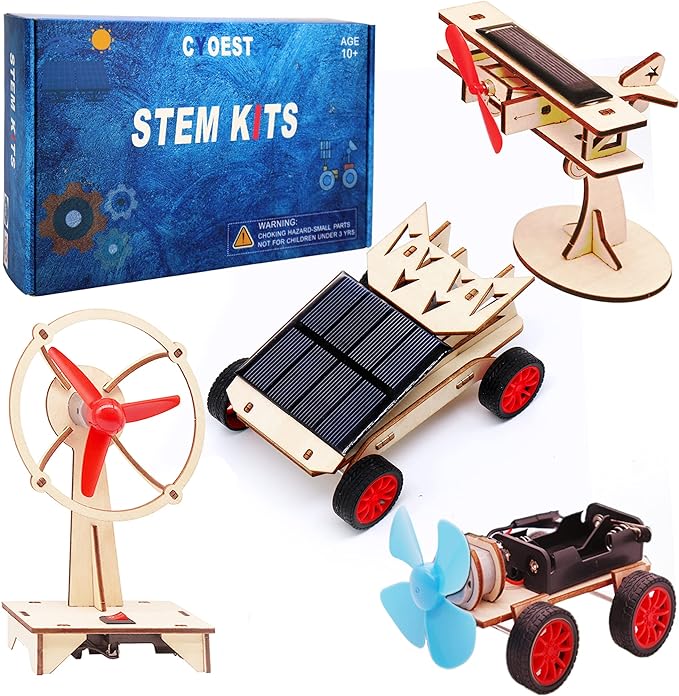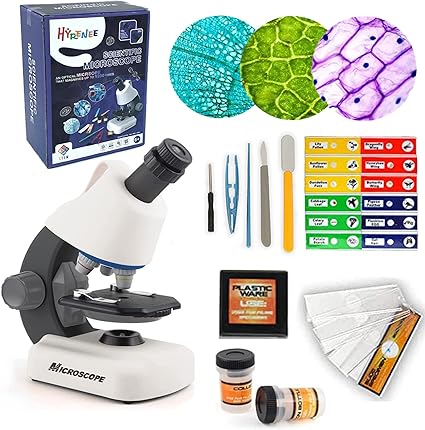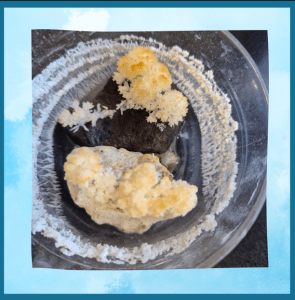Instant Ice
Water is supposed to freeze at 0°C, turning from liquid to solid. But there’s a crazy science trick that allows you to get water to go below freezing without turning into ice! By adding salt to ice, you can cause it to melt at temperatures under 0°C and produce chilled liquid water.
So get ready to produce some crazy cold water that stubbornly refuses to become ice! This “water below zero” experiment is guaranteed to fascinate both kids and adults as they gain deeper scientific insight into the behavior of water.
The really crazy part is that at the end, we’ll make the super-chilled water freeze solid in less than a second!
Materials:
- Bowl of crushed ice
- Salt
- Cup of water (preferably distilled)
- Spoon
- A thermometer
What to do?
- Fill a bowl with crushed ice
- Place a cup of water (preferably distilled) in the center of the ice
- Note that the ice should be higher than the level of the water
- Generously sprinkle salt on the ice around the cup Be careful not to get salt in the cup.
- Wait 30 minutes then carefully remove the cup from the bowl.
- Drop a small ice cube into the water

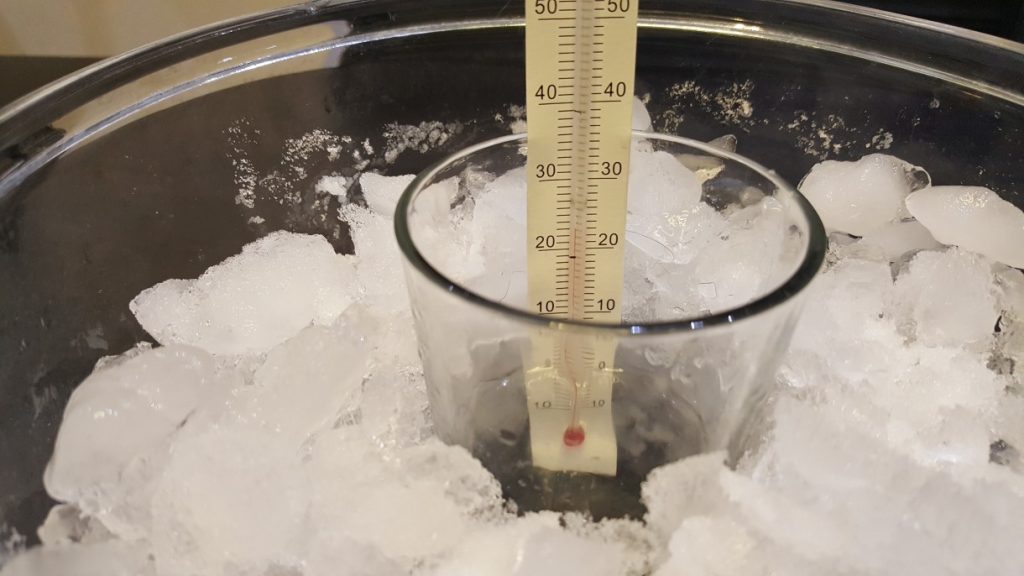
How does this happen?
In this experiment, we see a few phenomena. First, we can see liquid water below 0°C. How is this possible if water freezes at 0°C? Does the salt we added play a role? What is its role? Why do we add salt to the water?
Second, when we drop an ice cube into the cold water, it instantly freezes solid. What exactly happened here? Why did the small ice cube cause this effect?
Water Below Zero:
As we know, water turns to ice at 0°C. If we take an ice cube and leave it out of the freezer, it will absorb heat (energy) from its surroundings and melt back into liquid water. Melting ice cools the water because it requires energy to break the bonds between water molecules. This energy comes from the surroundings. Some ice melts, cools, and stops melting. It absorbs a bit more energy, melts more, and the cycle repeats. So the ice and meltwater stay at 0°C until all ice becomes liquid.
When we add salt to the water, it lowers the freezing point, allowing water to remain liquid at lower temperatures. So the ice melts faster into liquid. As mentioned, melting ice requires energy to break molecular bonds, cooling the water further and further, potentially reaching -20°C.
In addition to scientific experiments, this phenomenon also has practical value. In winter when it is very cold and roads become icy, salt is spread on the roads. As mentioned, salt allows water to remain liquid even at temperatures below zero and prevents the road from freezing.
Now for the second phenomenon – why doesn’t the water in the cup without salt freeze? Why does it only freeze when ice is added?
This is called supercooled water.
When a substance changes from liquid to solid state, it changes its spatial structure from disorderly with free molecular movement to an organized crystalline structure. This transition requires releasing excess kinetic energy into the environment.
When we put water in a cold environment (refrigerator or ice water), we draw out its heat energy and cause the liquid molecules to slow down until they move slowly enough to transition from liquid to solid state. But the cooling and velocity reduction alone are not enough – the structural change must also occur. This change requires certain conditions to take place. Mainly, it needs the initial crystal nucleus for other water molecules to attach to Usually various particles in water serve as nucleation sites, but when using distilled water, there are no particles. Also, cooling the water very rapidly doesn’t allow enough time for the initial nucleation point to appear.
Thus, we get supercooled water – water that based on temperature should be frozen, but the nucleation point enabling the freezing process hasn’t occurred yet.
When we introduce a small ice crystal into the water, we provide a nucleus for the freezing reaction to form and propagate through the liquid
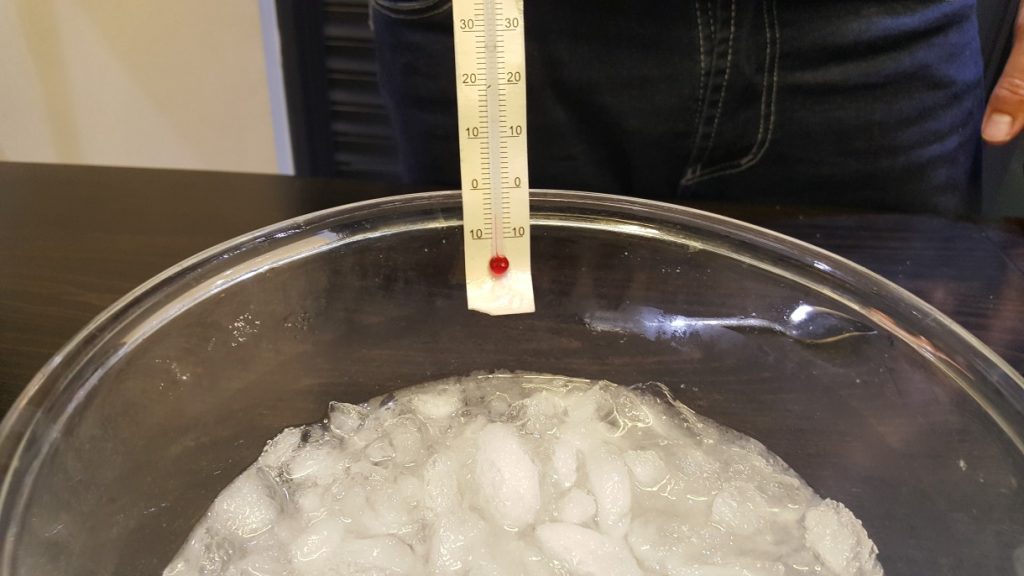
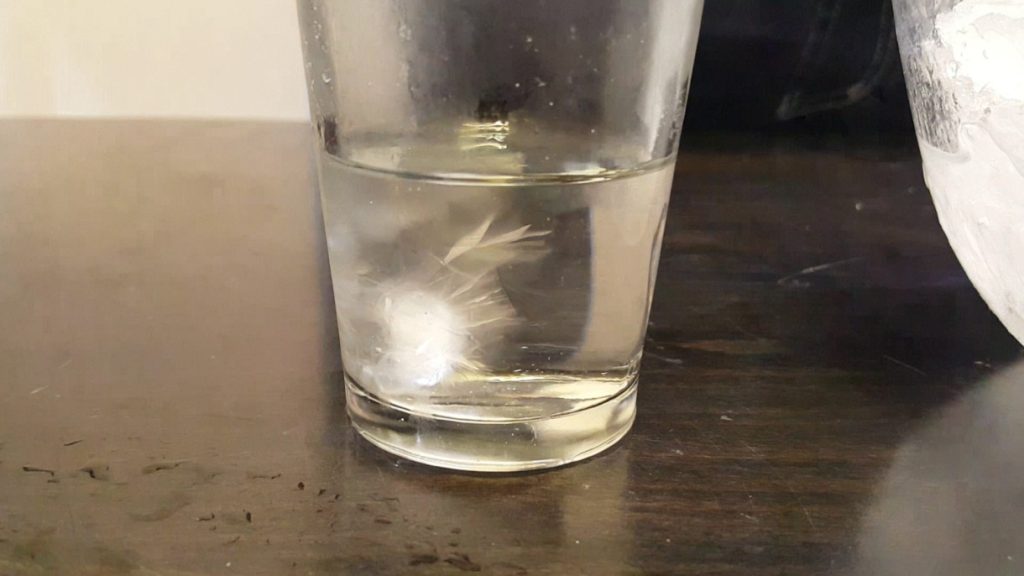
Looking for more Winter experiments? <<Click here>>
We’d love to showcase your creativity!
Share pictures of your experiments with us, and together, we can inspire young scientists everywhere!
